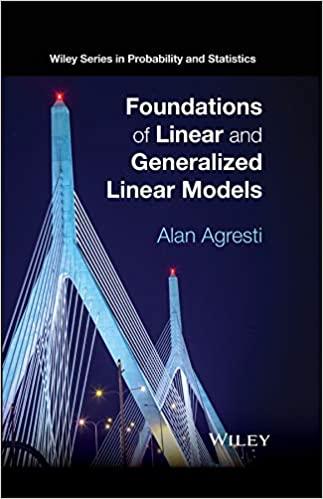This exercise is based on an example in the keynote lecture by Carl Morris (see www.youtube.com/watch?v=JOovvj_SKOg) at
Question:
This exercise is based on an example in the keynote lecture by Carl Morris
(see www.youtube.com/watch?v=JOovvj_SKOg) at a symposium held in his honor in October 2012. Before a Presidential election, polls are taken in two states that are usually swing states. In State A, the proportion y1 = 0.590 of n1 = 100 sampled state a preference for the Democratic candidate. In State B, the proportion y2 = 0.525 of n2 = 1000 sampled state a preference for the Democratic candidate. Treat these as independent binomial samples with population proportions ????1 and ????2. In which state is there greater evidence supporting a Democratic victory (i.e., ????i > 0.50)?
a. With a frequentist approach, show that the binomial P-values for testing H0: ????i = 0.50 against H1: ????i > 0.50 are 0.044 for ????1 and 0.061 for ????2.
b. A Bayesian statistician interprets “swing state” to mean that ????i is very likely to be between 0.40 and 0.60 and nearly certain to be between 0.35 and 0.65. To recognize this, she uses a N(0, ????2) prior for logit(????i), with
???? such that logit(0.35) and logit(0.65) are 3 standard deviations from the prior mean of 0. Show that the posterior (mean, standard deviation) are
(0.183, 0.143) for logit(????1) and (0.091, 0.060) for logit(????2). Based on the posterior distributions, show that P(????1 < 0.50 ∣ y1, n1) = 0.100 and P(????2 < 0.50 ∣ y2, n2) = 0.066. Explain why the Bayesian and frequentist approaches give different answers to the question about which state has greater evidence of victory. Summarize what causes this.
Step by Step Answer:

Foundations Of Linear And Generalized Linear Models
ISBN: 9781118730034
1st Edition
Authors: Alan Agresti





